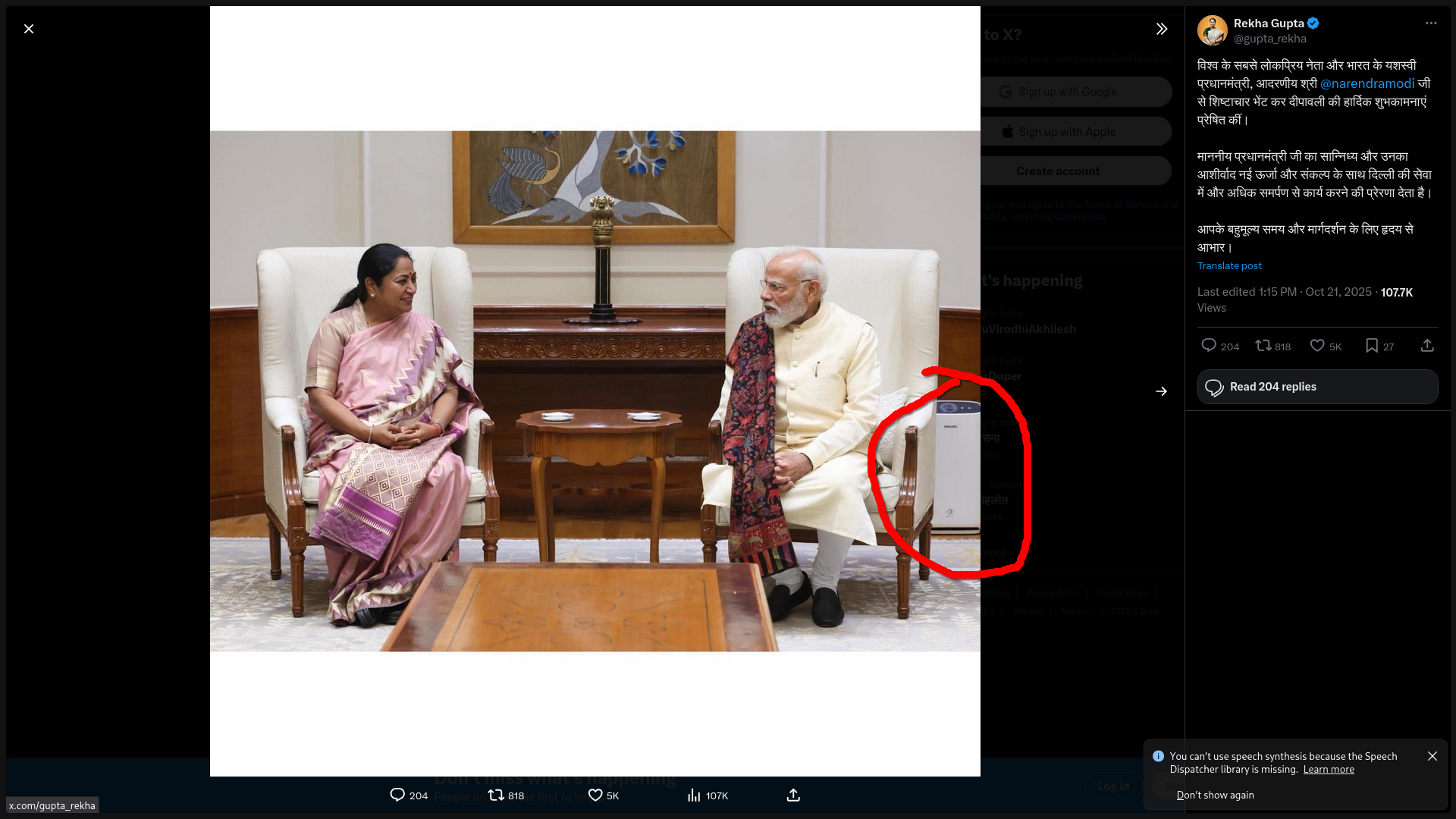Tomorrow it will be even worse — usually 250+ AQI. Still, this region has good airflow compared to the northern parts of India which literally go past the maximum reading on the scales — not great, not terrible — which is a result of after harvest stubble burning, firecrackers, cold weather and the entire northern region’s airflow blocked by the Himalayas.
The so called Hindus will literally call you out for being “weak” instead of deciding to not waste their money on the crackers and killing people. Delhi’s chief minister (who can’t even sign a piece of document) said that Diwali is incomplete without firecrackers before lifting the prevention measures from the previous government— which was also a failure.
Firecrackers were never even part of Diwali. The festival was about getting together, share gifts and sweets. But these radical Hindus don’t give a shit.
Update: Our Prime Minister with Delhi’s Chief Minister with air purifier while they encourage people to burst more crackers.



Maybe this is just me, but when it comes to air quality concerned I’m much more worried about the industrial factories in my area, the people burning gasoline for their cars and lawn tools, the bits of rubber coming off the tires, etc. I used to live closer I an airport, where the noise and air quality from the planes made life even worse.
Fireworks are such a minor contributint factor that I have a really hard time caring. Sure the sound is annoying, whether that’s for a religious reason or a baseball game or the annual celebration of US imperialism.
It’s worth remembering that BP themselves were the ones who made up the concept of a “carbon footprint” because it helped shift the blame from fossil capital to individuals. I think it’s important not to get distracted by these highly visible but ultimately insignificant contributions to air pollution.
You’re absolutely right that most year-round pollution comes from industrial activity and vehicles — and that companies have deflected responsibility by promoting ideas like carbon offsets, shifting the burden onto consumers.
But in India, the situation is more layered. Our cities already average AQI levels between 60–80 annually, which is poor by all global standards. During Diwali, even relatively cleaner cities see AQI levels spike above 200 — sometimes overnight. That kind of surge can’t be explained just by traffic and factories. it shows that firecrackers, while seasonal, are not a minor factor by any sense.
What makes things worse is that regulation around firecrackers is weak, and there’s little transparency about what chemicals are actually being burned. Plus, the political economy plays a big role: many local leaders have financial ties to the firecracker industry and thus banning fireworks is resisted by the industry under the pretext of protecting jobs.
In contrast to Western countries, where corporations spend billions on lobbying, in India, political power and business are often directly entangled. Corruption isn’t just top-down but it operates at every level, from bureaucrats to local politicians. So blaming the corporations is just pointing fingers to the creamy layer of the country’s corruption problems while ignoring the fact that the entire tree is rotten.
It’s just 2 days, is the AQI any better rest of the year?
Quit whining.
Diwali is for a week where the effects are at their peak. But firecrackers are used pretty much for any event in this country. And given the fact this industry is unregulated, you don’t even know what you’re breathing. If you’re from a western city — where AQIs are below 50, you would be too privileged to say “quit whining”
I lived in Delhi when the AQI was 3000 after Diwali and remained over 300 for rest of the winter. It’s bad through and though, there’s neither respite nor a religious cause of pollution during those times.